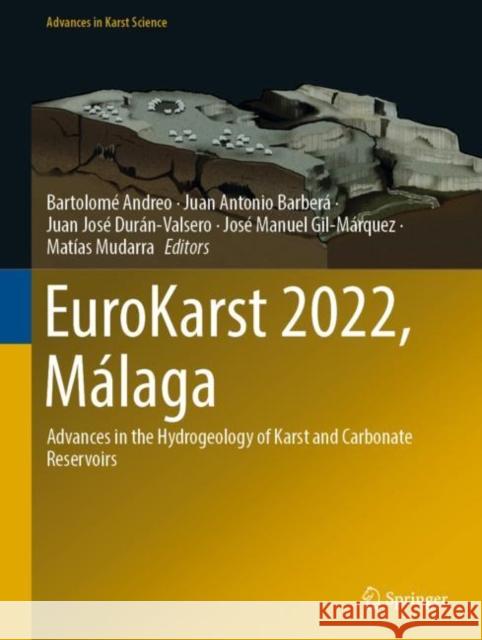Eurokarst 2022, Málaga: Advances in the Hydrogeology of Karst and Carbonate Reservoirs » książka
Eurokarst 2022, Málaga: Advances in the Hydrogeology of Karst and Carbonate Reservoirs
ISBN-13: 9783031168789 / Angielski / Twarda / 2023 / 254 str.
Eurokarst 2022, Málaga: Advances in the Hydrogeology of Karst and Carbonate Reservoirs
ISBN-13: 9783031168789 / Angielski / Twarda / 2023 / 254 str.
(netto: 883,85 VAT: 5%)
Najniższa cena z 30 dni: 886,75 zł
ok. 22 dni roboczych
Bez gwarancji dostawy przed świętami
Darmowa dostawa!
This book covers advances in the field of karst from a variety of perspectives to facilitate knowledge and promote interaction between disciplines. New methods are addressed that advance data collection, analysis, and interpretation in a wide range of karst contexts. Case studies are presented to provide examples of advancing science. Issues addressed include karst hydrogeology (water resources assessment, groundwater pollution and protection), methods to study karst aquifers (based on hydrodynamic, hydrochemistry, isotopes, dye tracing, geophysical surveys, and modeling techniques), karst geomorphology and landscape, mining and engineering in karst media (tunnels, dams, etc.), and karst cavities (touristic caves, natural heritage).This book is a resource for scientists around the world to compare problems, results, and solutions. Likewise, the examples included are used in policy decision making in karst regions. Finally, the contributions are used as a tool for university teaching.
This book covers advances in the field of karst from a variety of perspectives to facilitate knowledge and promote interaction between disciplines. New methods are addressed that advance data collection, analysis, and interpretation in a wide range of karst contexts. Case studies are presented to provide examples of advancing science. Issues addressed include karst hydrogeology (water resources assessment, groundwater pollution and protection), methods to study karst aquifers (based on hydrodynamic, hydrochemistry, isotopes, dye tracing, geophysical surveys, and modeling techniques), karst geomorphology and landscape, mining and engineering in karst media (tunnels, dams, etc.), and karst cavities (touristic caves, natural heritage).This book is a resource for scientists around the world to compare problems, results, and solutions. Likewise, the examples included are used in policy decision making in karst regions. Finally, the contributions are used as a tool for university teaching.











